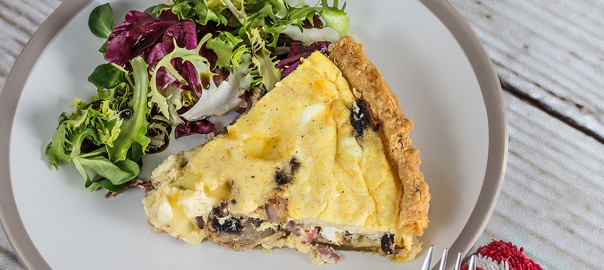Like most everyone who enjoys a treat now and then, we here at ButcherBox have a bit of a sweet tooth.
It might be a bit odd to hand out candied bacon — or pig candy as it’s known in different parts of the country — to the kiddos who come to your door on Halloween. And some people might think it strange to keep some sweet candied bacon strips in the refrigerator. But here, you are among bacon lovers.
We don’t judge. We also know our taste buds don’t care if they are treated to thick-cut bacon with eggs for breakfast or at a sugar-laced version at a cocktail party in the evening.
Which is what makes bacon candy so fantastic.
The rise of candied bacon
So let’s dig into the sweet and savory dish that is bacon candy.
These days, the traditional breakfast meat has developed a bit of a cultish following. Bacon is everywhere from the Bacon and Beer festival in Boston — which sells out very quickly each year and has expanded nationally — to bacon-themed food trucks to a featured role at almost any Bloody Mary-heavy brunch.
More and more, bacon is breaking out on its own as a singular dish, most often as bacon candy. Stop into any hip (or hipster, if you see it that way) restaurant, and you might find a glass filled with candied bacon adorning the bar.
The flavor of bacon candy combines the already savory taste of bacon and adds brown sugar or pure maple syrup and maybe a touch of chili powder. The fact that it can sit out at room temperature for hours or be kept chilled for weeks makes bacon candy the perfect snack food.
This phenomenon isn’t just occurring at trend-setting locales either; you are as likely to find candied bacon replacing the usual bowl of mixed nuts everywhere from your local steakhouse to a high-end hotel bar.
Bacon candy springs from the cocktail party circuit
So how did this trend start?
According to author Fred Thomspon, who chronicles all sorts of bacon-themed culinary delights in his cookbook “Bacon,” the history of this delicious snack is a bit of a mystery.
Bacon candy is believed to have first gained popularity in Washington, D.C.’s party circuit. But Thompson speculates that pig candy was most likely an import to the nation’s capital brought from the kitchen of an unknown Southern hostess.
The rise in the treat’s current popularity as bar food is linked, by a number of different people, to a small wine bar in California. According to lore, Lou’s on Vine in Hollywood began offering their take on pig candy to patrons as an alternative snack, and the buzz — and bacon — spread from there.
How to cook bacon candy
After all this talk of sweet bacon, you might be wondering how you can make it on your own. Worry not, the recipe is quite simple. Many candied bacon recipes call for baking the pork with a garnish of light brown sugar and/or maple syrup.
Twists on the dish include adding some spices, like ground black pepper, crushed red pepper flakes or chili powder to create the ultimate cocktail party snack, brunch side, or anytime food.
Check out the video below of ButcherBox Head Chef Yankel Polak making some bacon candy with maple syrup, sriracha, brown sugar, ground black pepper, and coconut aminos:
Here is another great bacon candy recipe that is one of the more popular recipes found at AllRecipes. It is made even better using ButcherBox bacon that comes from heritage-breed pigs.
Bacon Candy Recipe
Ingredients:
1/4 cup brown sugar, packed
2 tablespoons rice vinegar
2 tablespoons maple syrup
Ground black pepper to taste
1 pound ButcherBox bacon
Instructions:
1. Preheat oven to 350 F.
2. Mix brown sugar, rice vinegar, maple syrup and ground black pepper in a small bowl.
3. Place bacon slices on a cooling rack set over a baking sheet.
4. Cook in the preheated oven for 10 minutes, turn slices and bake another 5 minutes.
5. Remove bacon and brush both sides with brown sugar mixture. Return bacon to the oven and bake another 5 minutes. Repeat basting every 5 minutes until bacon is browned and crisp, a total cooking time of about 35 minutes.
6. Let sit on a cooling or wire rack at room temperature.
After letting it rest, eat and enjoy the sweet, bacon goodness!







